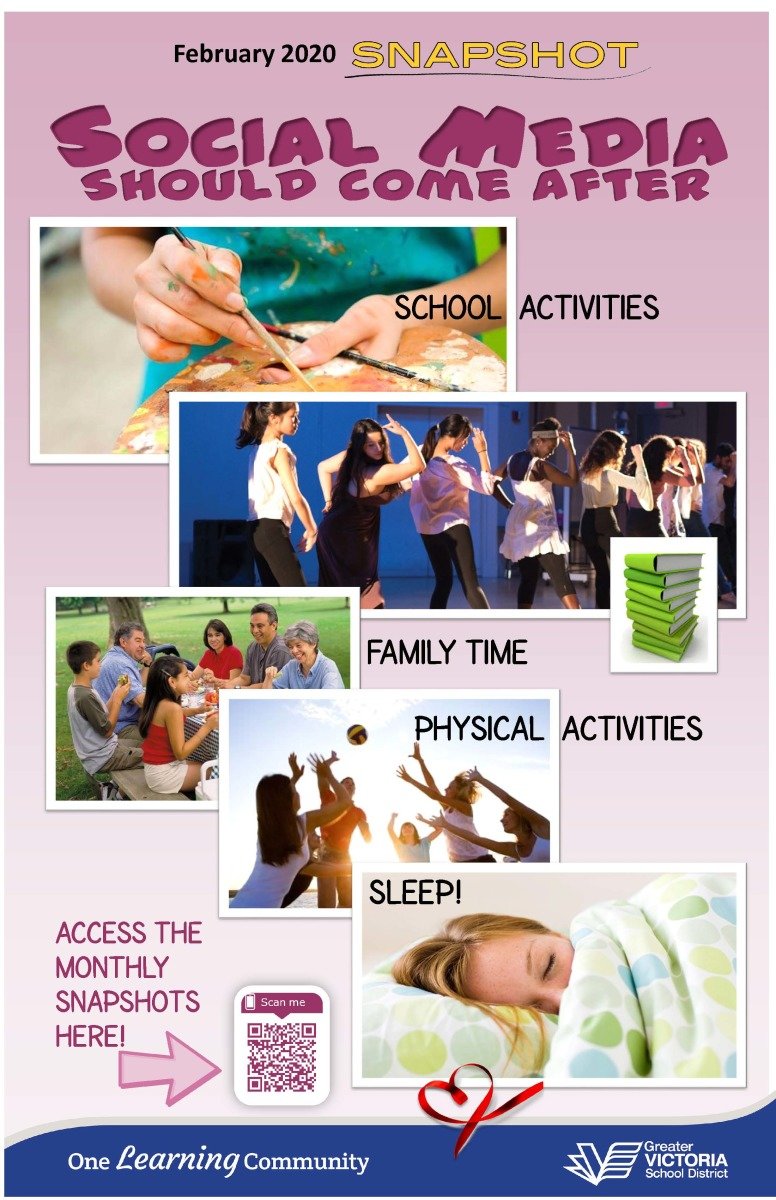|
|
|
| |
| |
|
Don't Leave Kids to Their Own Devices February 2020
|
![Don't Leave Kids to Their Own Devices February 2020]() |
|
|
|
|
|
 | February 2020
Middle Snapshot
DON'T LEAVE KIDS TO THEIR OWN DEVICES: Promoting Healthy Screen Time with Children and Teens
|
|
|
 | Digital media is part of everyday life for children and adolescents. While most Canadian parents are concerned about how much time their children spend with digital devices, HOW screens are used is as important as how much they are used. That’s the message in a recent position statement from the Canadian Paediatric Society (CPS).
The CPS is the only national organization of paediatricians in Canada. With more than 3,000 members, the CPS is uniquely positioned to speak to the health needs of Canadian children and youth. CPS spokespeople work in hospitals, universities, clinics and private practices across the country. They can address a range of issues affecting the health, development and safety of babies, children and teens.
This position statement was
funded with an unrestricted grant from TELUS Wise.The statement was released June 2019 and outlines the potential benefits and risks of digital media for children and adolescents over the age of 5.
|
|
|
|
|
 |
“Each child or teen – and each family – has different needs. So it’s more useful to focus on how screens are being used and ensuring that screen-use isn’t interfering with other aspects of their life,” said Dr. Michelle Ponti, a paediatrician in London, Ontario and chair of the CPS Digital Health Task Force.
|
|
|
| "We need to prioritize school activities, physical activity, sleep, and social activities like family meals before reaching for a device.”
|
|
|
For school-aged children (5-12 years old), high-quality, immersive programming that is co-viewed with family can be educational and promote positive social skills. Children this age, however, appear to be more vulnerable to negative outcomes from heavy screen use, including depressive symptoms.
|
|
|

| While adolescents who spend a moderate amount of time on digital technology benefit from online friendships, studies show negative effects associated with zero use or excessive use.
Screen use close to bedtime can also negatively impact sleep, and excessive use is correlated with increased sedentary time, weight gain, and body image concerns.
|
|
|
|
The statement encourages parents to be aware of what their children and teens are doing online, to be as involved as possible, and to moderate their own screen time.
|
|
|
To promote healthy digital media use, the CPS recommends that parents:
Manage screen use: Make a family media plan; be present and engaged when screens are used; speak proactively with teens about acceptable and unacceptable online behaviours. |
Encourage meaningful screen use: Prioritize face-to-face interactions, sleep, and physical activity over screen use; choose developmentally appropriate content; be part of their children’s digital lives; and prioritize screen use that is educational, active, or social.
|
|
|
| Model healthy screen use: Have daily “screen-free” times; turn screens off when not in use; turn screens off at least an hour before bed; do not text while driving or biking.
|
|
|
 | Monitor for problematic screen use such as: complaints about being bored or unhappy without access to digital technology; challenging behaviours in response to screen time limits; screen use or time that interferes with face-to-face interaction, physical activity, school, or sleep; negative emotions after using social media, texting, or playing video games.
|
|
|
|
|
|
|
|
|
The Greater Victoria School District is committed to providing safe and healthy learning environments for all students. As part of our approach, we have been focusing on mental health and substance use topics to help us promote well-being in our schools.
Substance use is a complex topic that often highlights varied philosophies, myths, and a great deal of fear. The research shows us that early interventions, particularly around critical thinking and decision making, has an impact on delaying use in youth. As well, open dialogue with adults, intentionality around attachment, and a focus on the
| factors that contribute to substance use, as opposed to the actual substances, also prevent, delay and reduce substance use in our students.
Our goal is to create a more cohesive, systematized substance use plan focusing on social emotional learning, that includes our youth and schools, community partners, and families. We strive for a shared vision, common language and consistent messaging over time, in order to support positive youth culture and a healthy perspective on substance use and mental health.
In B.C. the legal age for alcohol and cannabis consumption is 19 years old.
|
|
|
|
|
| |
|
|
|
|
|
|
|
|
| |
|